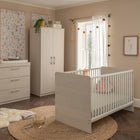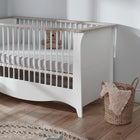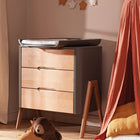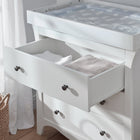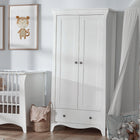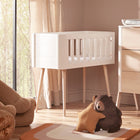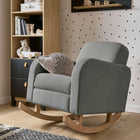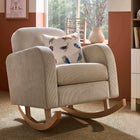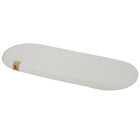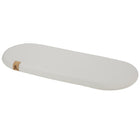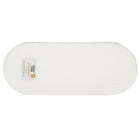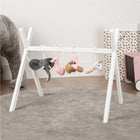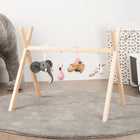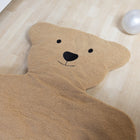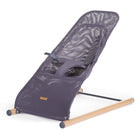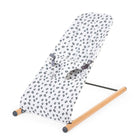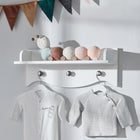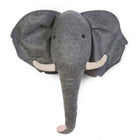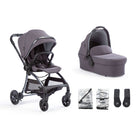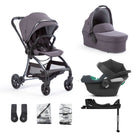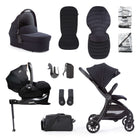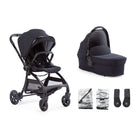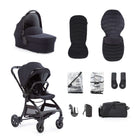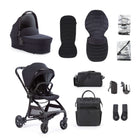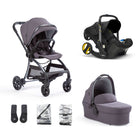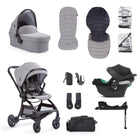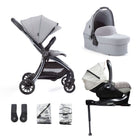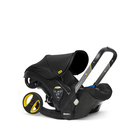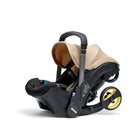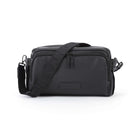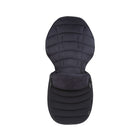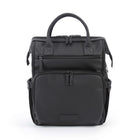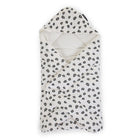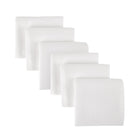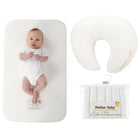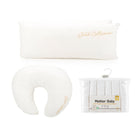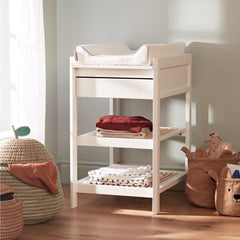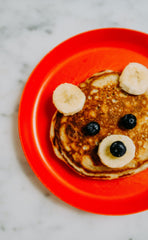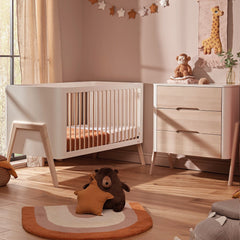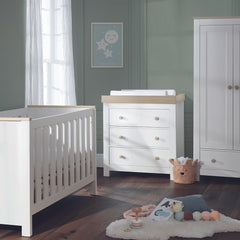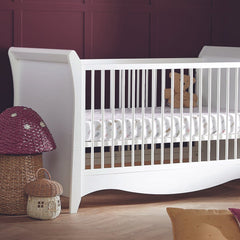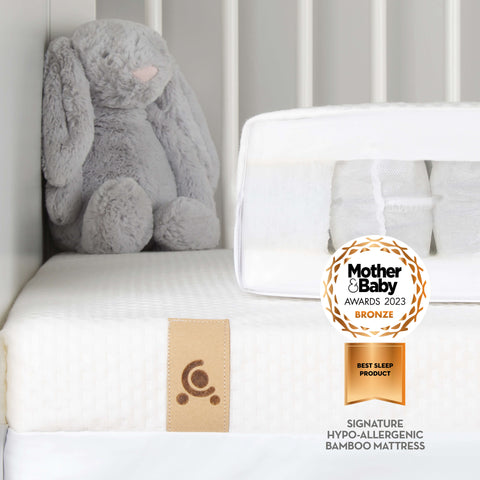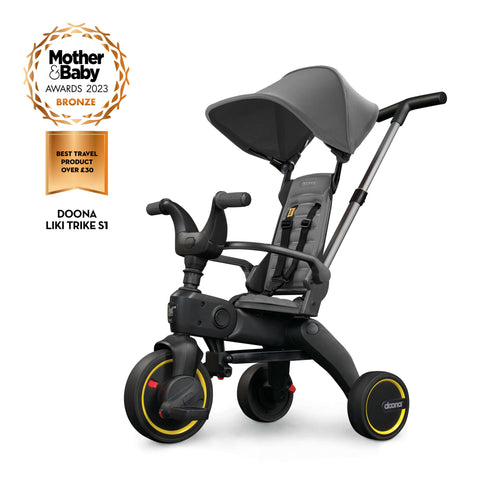
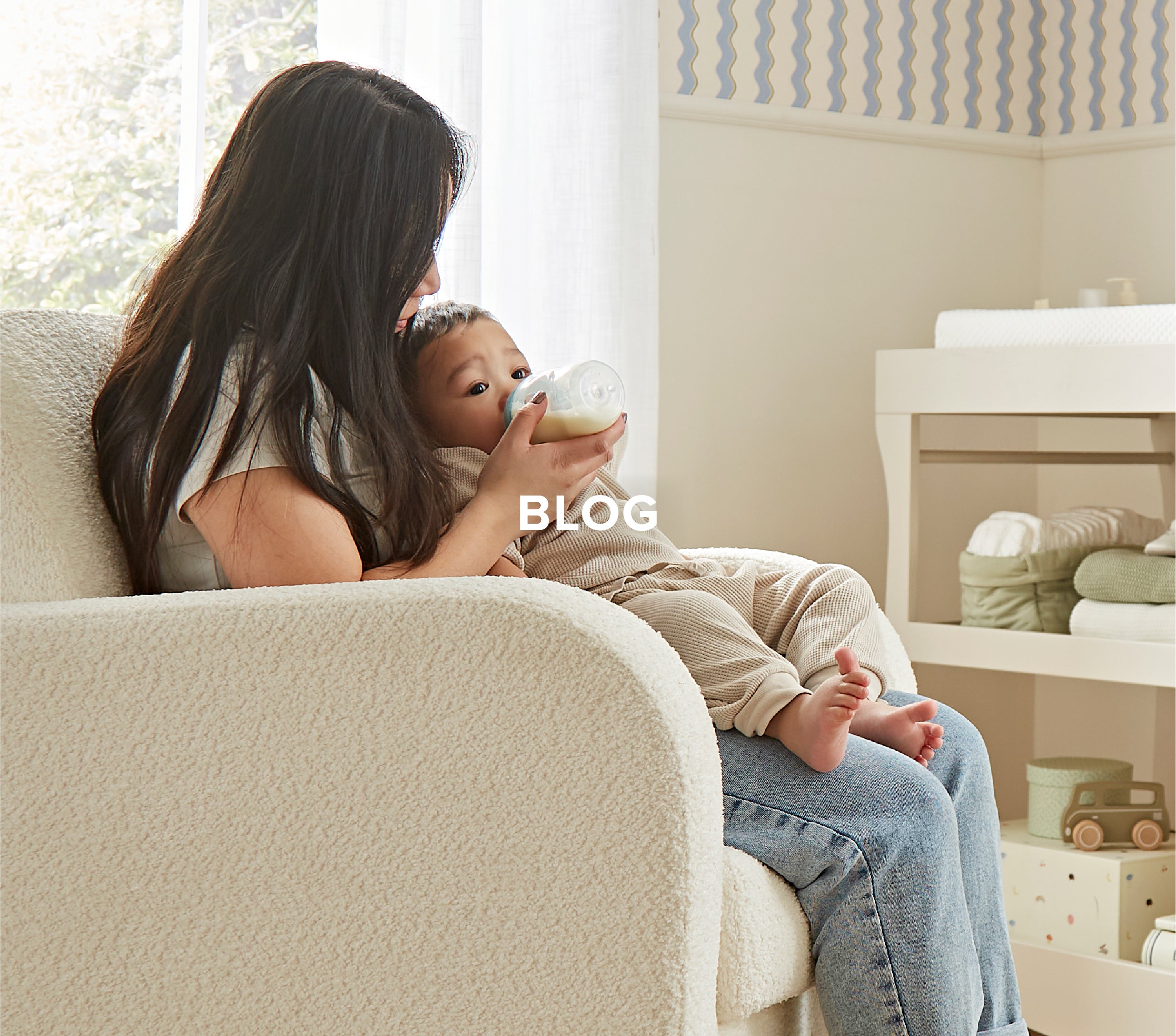
looking for something specific?
take a look at our blog categories and get the advice and guidance you need!
check out our latest articles
First Time Parents
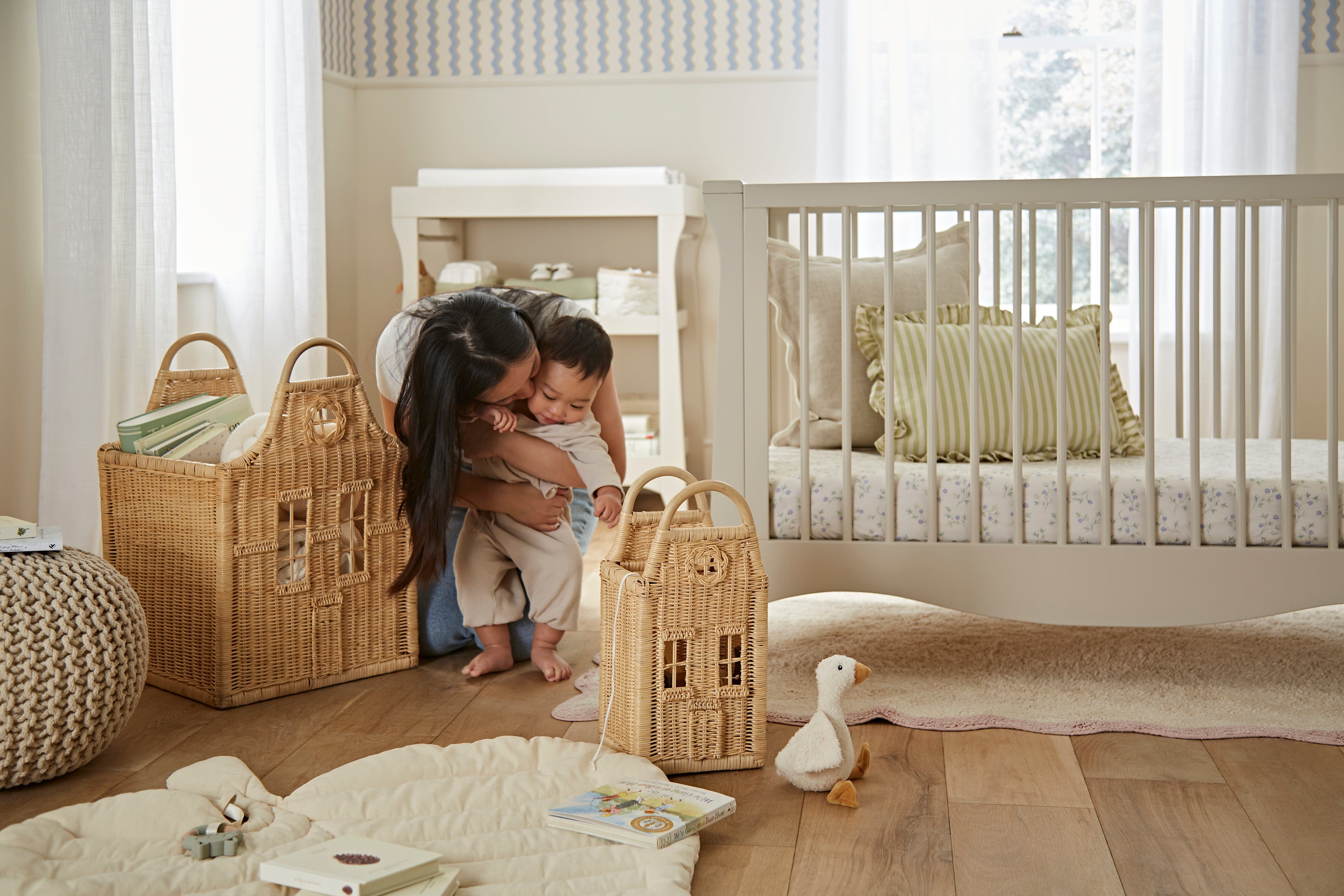
Welcoming a new baby into the world is one of life’s most magical moments, and if your friend has just become a new mum, you’ll want to show her just how much you care. While baby gifts are always appreciated, don’t forget about mum—she deserves a little extra love too!
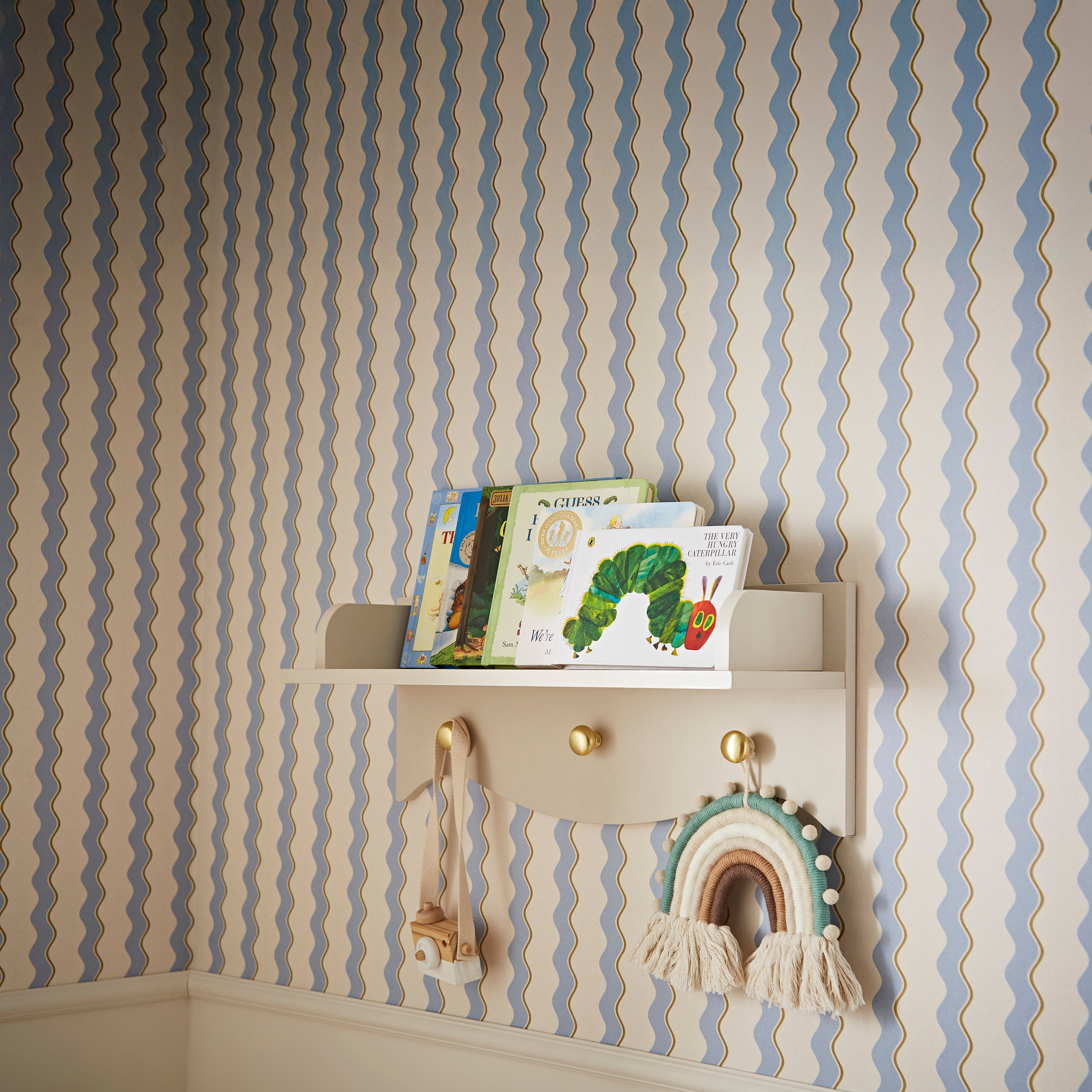
World Book Day is a celebration of the stories that shaped us, inspired us, and stayed with us long after we turned the final page. At the office, we’ve been reminiscing about the books that filled our childhoods with magic, adventure, and heartwarming moments. Here are some of our absolute favourites:
The Jolly Postman – Janet & Allan Ahlberg
Chosen by Clare, Marketing Director
A timeless classic, The Jolly Postman takes readers on a delightful journey as the postman delivers letters to beloved fairy-tale characters. The interactive format of real letters and postcards made this book a joy to explore, bringing stories to life in a unique and playful way.
Peace at Last – Jill Murphy
Chosen by Claire, Senior Designer
The story of Mr. Bear’s restless night resonates with anyone who has ever struggled to get to sleep! Jill Murphy’s charming illustrations and rhythmic storytelling make Peace at Last a comforting and familiar bedtime favourite that has been adored for generations.
The Gruffalo – Julia Donaldson & Axel Scheffler
Chosen by Emily, Customer Service Advisor
Who could forget the clever little mouse who outsmarts a fearsome Gruffalo? Julia Donaldson’s brilliant rhyming story, paired with Axel Scheffler’s iconic illustrations, creates an enchanting tale of wit and courage that continues to captivate children and adults alike.
We’re Going on a Bear Hunt – Michael Rosen & Helen Oxenbury
Chosen by Amy, Social Media and Content Executive
With its rhythmic, repetitive text and interactive storytelling, We’re Going on a Bear Hunt is an adventure that invites children to join in the fun. Whether wading through grass, splashing through rivers, or tiptoeing through a cave, it’s a book that sparks imagination and excitement.
The Very Hungry Caterpillar – Eric Carle
Chosen by Kysha, Customer Service Operations Manager
Few books are as instantly recognisable as Eric Carle’s The Very Hungry Caterpillar. With its vibrant illustrations and interactive cut-out pages, this charming story of transformation and growth has been a childhood staple for decades.
These books remind us of the joy of reading and the powerful impact stories can have on our lives. This World Book Day, we encourage everyone to revisit their favourite childhood books or share them with the next generation. After all, the best stories are the ones that stay with us forever.
What are your favourite childhood books? Let us know in the comments!
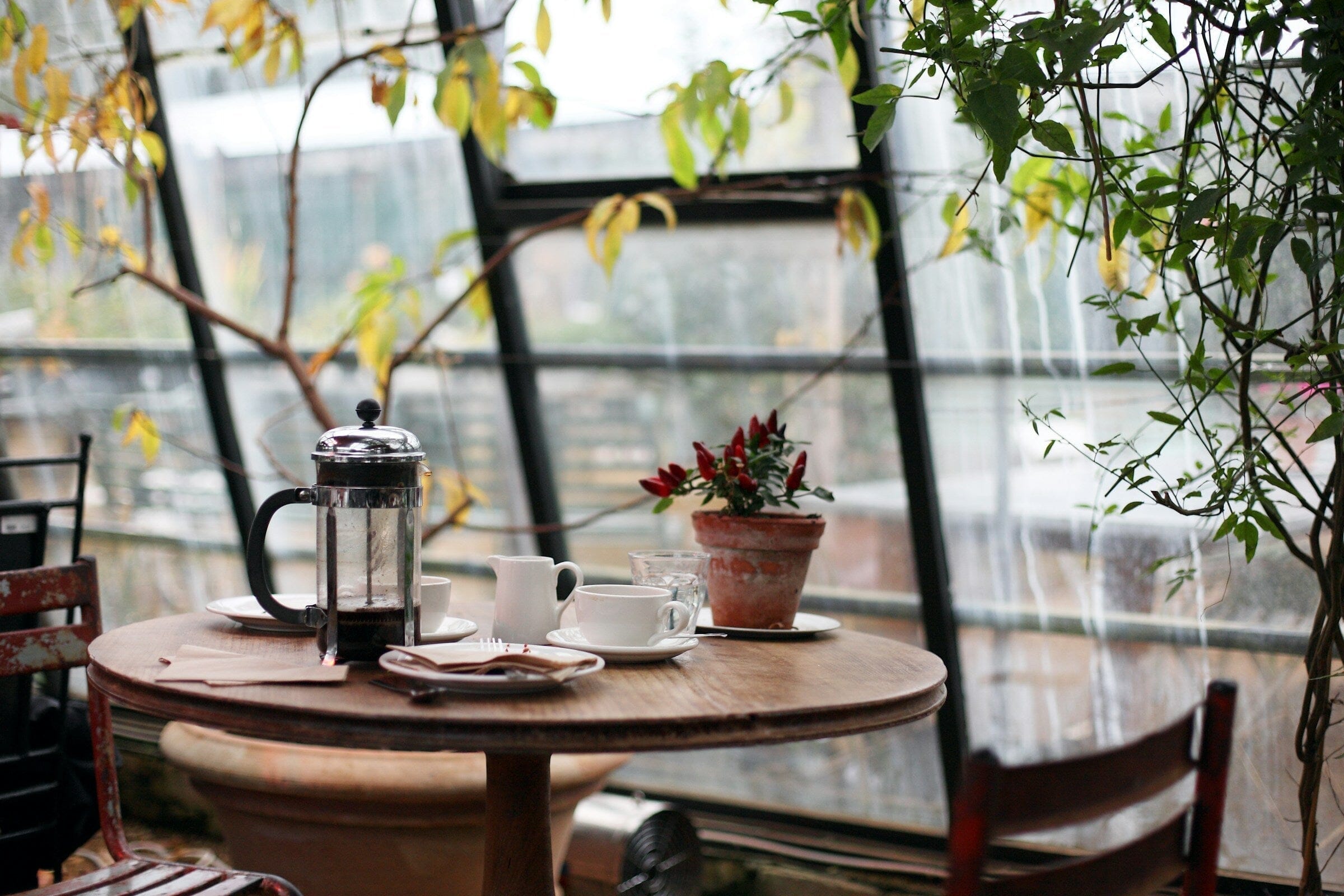
Random Acts of Kindness Day is the perfect opportunity to spread love, support, and care - especially to new parents who are navigating the joys and challenges of welcoming a little one into their lives. Small, thoughtful gestures can make a world of difference in helping new mums and dads feel appreciated and supported. Here are some simple yet meaningful ways you can show kindness to new parents.
Bring them a home-cooked meal
Between sleepless nights and constant nappy changes, cooking can often fall to the bottom of a new parent's to-do list. A nourishing, homemade meal can be a lifesaver, giving them one less thing to worry about. If you’re unsure about their dietary preferences, consider gifting a meal delivery voucher, like Uber Eats or Deliveroo, so they can choose something they love.
Offer to babysit
Giving new parents a little break (even just for an hour!) - whether it’s for a nap, a shower, or a quick outing - can be incredibly valuable. Even an hour of uninterrupted rest can leave them feeling refreshed and recharged.
Help with chores
Simple household tasks like laundry, washing the dishes, or tidying up can feel overwhelming for new parents. Lending a hand with these small tasks can make a huge difference, allowing them to focus on their baby without worrying about the mess piling up.
Send a thoughtful care package
A care package filled with essentials like snacks, herbal teas, self-care products, and baby wipes can be a lovely way to show you’re thinking of them. Consider adding a positive note to brighten their day even more.
Offer emotional support
Sometimes, all a new parent needs is someone to listen. Sending a quick text to check in, offering words of encouragement, or simply being there for them can be incredibly uplifting. Let them know they’re doing an amazing job!
Organise a coffee date or a phone call
New parents can often feel isolated, especially in the early days. If they’re up for it, invite them for a coffee or set up a phone call to catch up. A little adult conversation can be a great mood booster.
Provide baby supplies
Running out of nappies or wipes is a common occurrence for new parents. A small surprise delivery of essentials can be incredibly helpful and much appreciated.
Respect their space
While offering help is wonderful, it’s also important to respect their need for space and rest. If they’re not up for visitors, a simple message of support or dropping off a small gift at their doorstep can still make a difference.
On this Random Acts of Kindness Day, let’s celebrate the power of small, thoughtful gestures. A little kindness goes a long way, especially for new parents who are adjusting to a beautiful yet challenging chapter of their lives.
And to make Random Acts of Kindness Day extra special, for today only we're offering free delivery on our brand-new SS25 nursery furniture collection!

How to make Baby's first Christmas Extra Special
Your baby's first Christmas is a magical milestone. While your little one may be too young to remember the day, the precious moments you create will become cherished memories and the start of traditions that last for years to come.
Whether you're starting new traditions or adding to existing ones, we’re here to inspire you with ideas to make this Christmas unforgettable for your little one—and just as meaningful for you.
Making memories that last forever:
There are lots of different ways to make lasting memories with your little one over the festive season, and we’re sure you’ll treasure every moment you spend together as a family. Here’s how you can capture these memories to cherish once they’re all grown up:
Personalised Tree Ornaments:
Create salt dough ornaments or frame their tiny handprints for a keepsake you’ll cherish forever. These handmade treasures are a fun way to celebrate this special occasion and will be brought out every December when decorating the Christmas tree.
Click here for more on how to make salt dough ornaments
First Christmas Memory Box:
Gather keepsakes such as their first Christmas Day outfit, festive photos, and other memorabilia. A memory box is a beautiful way to revisit these moments in years to come.
Starting family traditions:
Family traditions bring warmth and meaning to Christmas celebrations, and Baby’s first Christmas is the perfect time to start.
Visiting Father Christmas:
Although your baby won’t recall going to see Father Christmas for the first time, it’s a magical moment that will become a tradition you stick to each year. Seeing your little one’s face light up as they see Santa and his workshop for the first time is a memory you will cherish.

https://www.pexels.com/photo/man-in-red-santa-claus-costume-standing-beside-toddler-3150031/
Christmas Eve Box:
This timeless tradition is perfect for children of all ages. Fill the box with cosy pyjamas, a soft toy, and festive treats. It's a ritual your baby—and their future family—will look forward to every year.
Matching Christmas Pyjamas:
As Christmas Eve rolls around each year, an easy tradition to keep up with is matching Christmas Pyjamas for the full family. But be sure to buy these in advance, as you may find the size you need has sold out!
The Magic of Baby’s First Christmas
Experiencing Christmas through your baby’s eyes is nothing short of magical. The season is a sensory wonderland for little ones, full of sights, sounds, and textures to explore:
Twinkling Lights & Decorations:
Babies are captivated by sparkling lights and shiny ornaments. Choose baby-safe decorations they can safely touch and enjoy.
https://www.pexels.com/photo/baby-wearing-a-santa-hat-14910387/
Seasonal Story Time:
Books are a great way to bond with your little one and also helps with their development. Books with bright colours, textures, and sounds can help babies develop their sensory skills and cognitive abilities. There are lots of festive storybooks for you and your baby to enjoy, including Gingerbread Fred and Spot’s First Christmas.

Music & Movement
Share your favourite Christmas songs and have a family dance session. Babies love music, rhythm, and movement.
Gifts for Baby’s First Christmas
Choosing meaningful gifts for your baby’s first Christmas can make the day even more special. Write a gift wish-list and share it with family and friends to make it easier for them to buy practical gifts that you actually want or need.
Personalised Keepsakes
An embroidered blanket, a photo album or a custom growth chart to capture their milestones!
Interactive toys:
Choose sensory toys such as a nightlight projector and a playmat, soft stacking blocks or musical instruments designed for little hands. Our standing giraffe stuffed animal is not only a delightful addition to the nursery but also a unique gift that will grow with your child. Perfect for imaginative play as they get older.
Gifts that grow with them:
Ride on toys such as the Childhome rocking scooter or elephant are great for coordination and mobility. Or, a personalised toy box to store all their treasures for years to come.
Your baby's first Christmas is about more than the gifts under the tree. It’s an opportunity to create meaningful traditions and special moments that will become part of your family’s celebrations for years to come.
Wishing you a magical first Christmas!
Make sure you visit our Christmas Gifting Collection for ideas and follow us on Instagram to get involved in our 12 days of Christmas Giveaways!
Toddler Advice
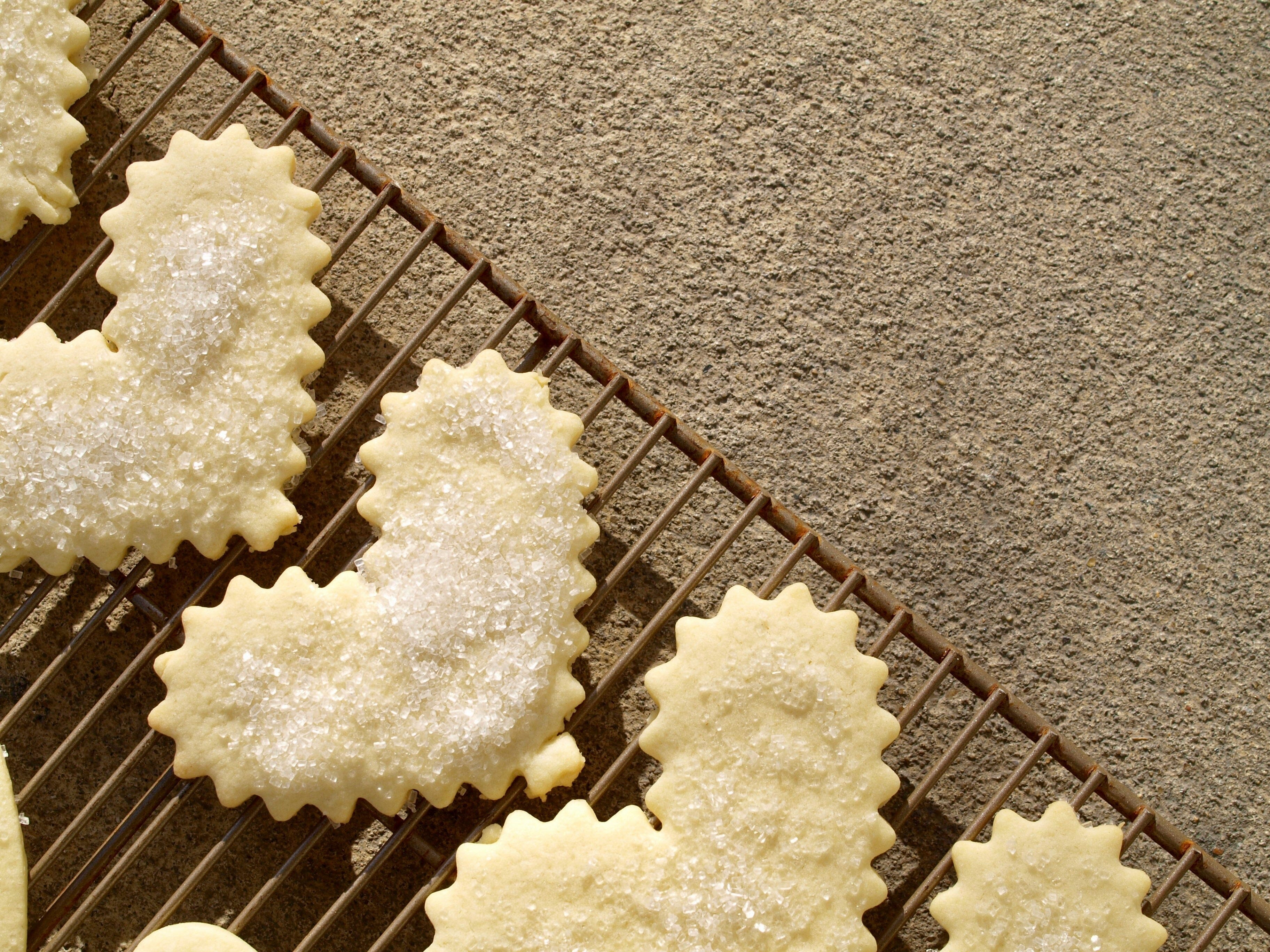
Valentine’s Day isn’t just for couples - it’s a wonderful opportunity to spend quality time with your little ones and create special memories together! If you’re looking for simple and engaging ways to celebrate with your toddler, we’ve got you covered. Here are 8 fun Valentine’s Day activities that incorporate sensory play, arts and crafts, baking, and other exciting ways to celebrate.
Valentine’s Sensory Bin
Create a Valentine’s themed sensory bin using red, pink, and white rice or dried pasta. Add heart-shaped cookie cutters, scoops, measuring spoons, and small toys for your toddler to explore. Let them scoop, pour, and feel different textures while developing fine motor skills.
Always make sure you supervise your toddler during any sensory activities.
Fingerprint Heart Cards
Help your toddler create Valentine’s Day cards by using their fingerprints to make heart shapes. Let them experiment with different colors and create a heartfelt keepsake for family and friends.
Valentine’s Day Storytime
Snuggle up in the Etta Nursing Chair and read Valentine’s-themed books with your toddler. Some great choices include Love from The Very Hungry Caterpillar by Eric Carle and Guess How Much I Love You by Sam McBratney.
Dance Party with Love Songs
Create a playlist of fun, love-themed songs and have a mini dance party in your living room! Songs like “Love Is an Open Door” from Frozen and “A Whole New World” from Aladdin are great choices.
Heart-Shaped Sugar Cookies
Bake simple sugar cookies and let your toddler help cut them into heart shapes using cookie cutters. Once baked and cooled, decorate with pink and red icing and sprinkles!
DIY Playdough Hearts
Make homemade playdough in Valentine’s colours. Use heart-shaped cookie cutters and rolling pins to let your child create their own Valentine’s-themed playdough designs.
Act of Kindness Together
Teach your toddler the importance of kindness by doing something special for a family member, friend, or neighbour—like delivering a handmade card or a small treat.
Love Bug Craft
Use kitchen roll tubes, googly eyes, pipe cleaners, and paint to create adorable “love bug” crafts. Your toddler will love decorating their bug with hearts and glitter!
These easy and fun Valentine’s Day activities will keep your toddler entertained while creating special moments together. Whether you choose sensory play, crafts, baking, or other fun experiences, your little one will love celebrating the holiday in their own sweet way. Enjoy making memories, and Happy Valentine’s Day!
Pregnancy
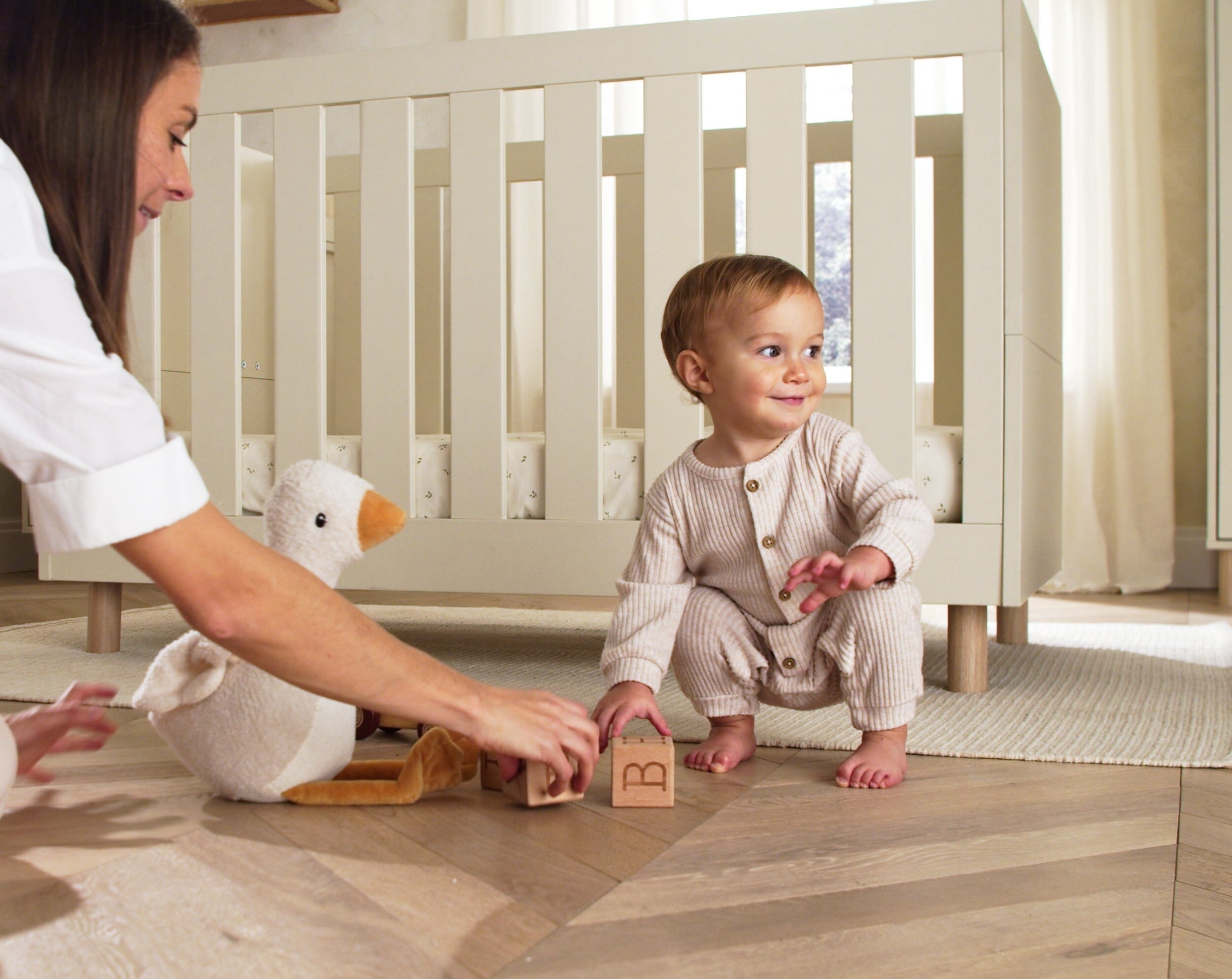
The Easter bank holiday is the perfect time to slow down, nest, and create a beautiful nursery ready for your little one’s arrival. Whether you’re expecting your first baby or refreshing a space for a growing family, this weekend offers the perfect opportunity to transform your nursery into something truly special.

Sleep – that precious luxury. Before pregnancy, you probably drifted off without a second thought. But as your body changes, your bump grows, and new aches and worries emerge, getting a decent night’s sleep can start to feel like a distant dream.
If pregnancy insomnia, restless legs, or just plain discomfort are keeping you up at night, you’re not alone. The good news? There a plenty of ways to create a sleep-friendly environment and wind down for the night.
Cut out screen time an hour before bed
We’re all guilty of that one-last-scroll through social media or bingeing one more episode of a favourite show. But the blue light from your phone, tablet, or TV can trick your brain into thinking it’s still daytime. This makes it harder for your body to produce melatonin, the hormone that helps you wind down and fall asleep.
Create a relaxing bedtime routine
Establishing a calming bedtime routine helps signal to your body that it’s time to wind down. Choose activities that soothe your mind and relax your body:
-
Practice mindfulness or deep breathing exercises: Apps like Calm or Headspace can guide you through gentle meditation, helping you to switch off before bed
-
Reading: Rather than opting for a screen like your phone, try reading a few pages of a lighthearted book instead
-
Self-care: A warm (but not too hot) shower can help relax tense muscles and prepare your body for sleep
Consistency is key when first establishing a bedtime routine – find what works for you and stick to it.
Invest in a pregnancy pillow
One of the biggest challenges you are likely to face when sleeping while pregnant is simply finding a comfortable position. As your bump grows, it can feel impossible to get comfy without tossing and turning.
That’s where the pregnancy pillow comes in. These lifesavers come in various shapes, from C-shaped to U-shaped, and provide support where you need it most — whether that’s under your bump, between your knees, or behind your back. Bonus? Many pregnancy pillows double as feeding or sitting supports after your baby arrives.
📷 @lifewith_jacob.lottie.nellie
Avoid caffeinated drinks in the evening
This one might sound obvious, but it’s easy to forget how much caffeine can sneak into your day. Tea, coffee, and even cola can disrupt your ability to fall asleep.
During pregnancy, it’s recommended to limit your caffeine intake to no more than 200mg per day. Save your caffeinated drink for the morning and switch to decaf options as the day winds down.

Stay active during your pregnancy
Keeping active will help you stay fit and well during your pregnancy. Gentle exercise during the day may also help you sleep better at night.
Consider these bump-friendly activities:
-
Walking: A brief stroll outside in the fresh air can help clear your mind and improve your mood
-
Antenatal yoga or pilates: Antenatal classes are a great way to meet other parents-to-be, just make sure the instructor knows you’re pregnant
It’s important to listen to your body and avoid pushing yourself too hard during physical activity. Speak to your GP or midwife for more advice about exercising while pregnant.
Pregnancy might bring its fair share of sleep challenges, but with a few mindful adjustments, you can create a sleep routine that works for you. Be kind to yourself — some nights will be better than others, and that’s okay.
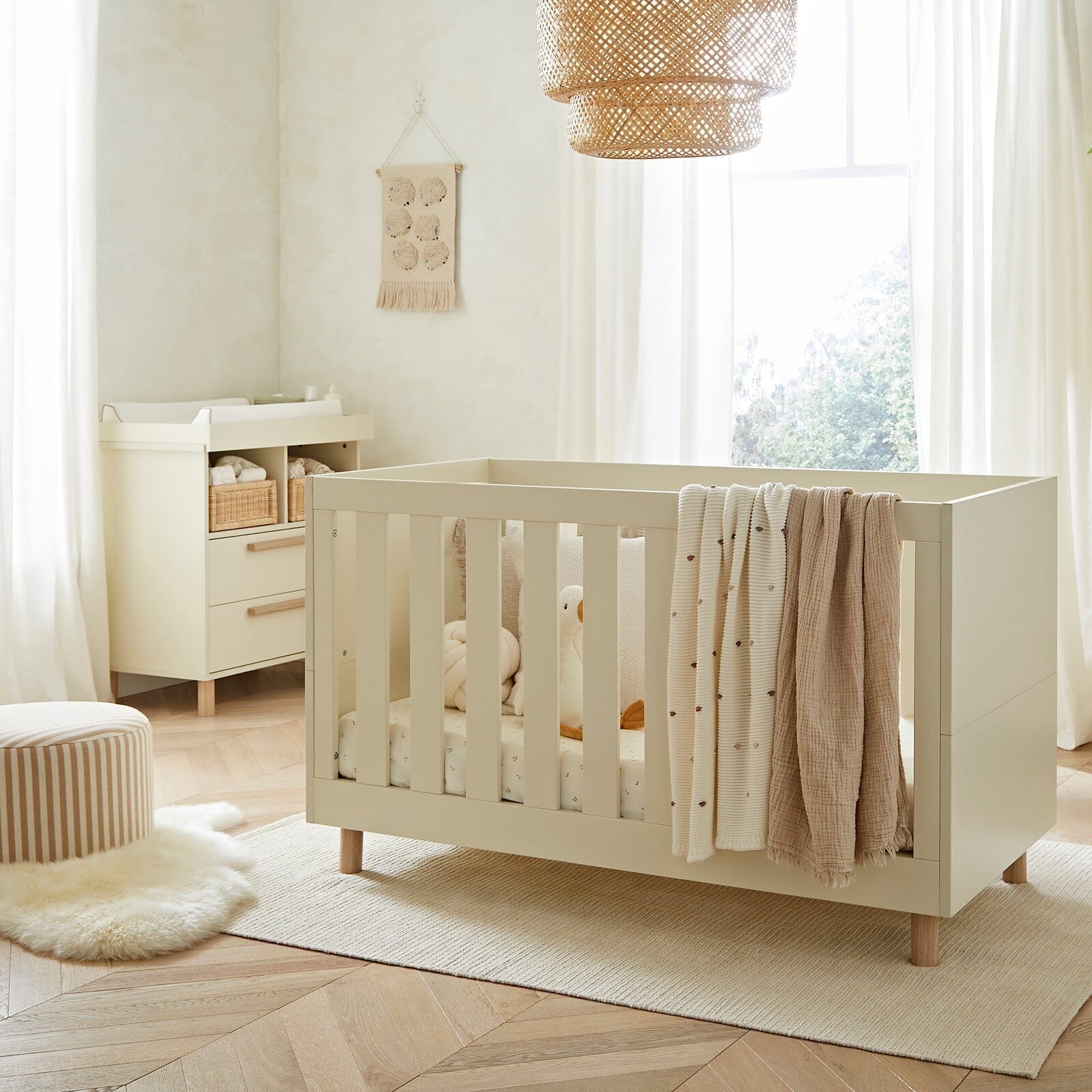
Welcoming a new baby into the world is one of the most amazing experiences in life. As you prepare to meet your little one, the countdown to their arrival can feel equal parts exciting and overwhelming.
Preparation ahead of your baby’s arrival is important to help ease the transition into parenthood, and luckily for you, there are lots of tools and resources to help you prepare during your pregnancy.
Whether it’s your first baby or you’re adding to your family, here are 10 essential things to do before your baby arrives to ensure you’re ready for their debut.
Create a birth plan
A birth plan is personal to you and contains all the details of what you would like to happen during your labour, birth, and after birth. If you would like to create a birth plan your midwife can help you. Things to think about are:
-
Your birthing options (hospital, in a midwifery unit, or at home)
-
Decide on your preferences for pain relief, labour positions, and who you would like to support you at your birth
-
Be flexible – things may not go exactly as planned
Take antenatal classes
Antenatal classes are a great way to prepare for birth and the arrival of your baby. Places in antenatal classes can get booked up quickly. So be sure to look into these early in your pregnancy to avoid disappointment.
-
Antenatal classes are free on the NHS – to find out about classes near you, ask your midwife, health visitor or GP
-
Include your partner or the person who will be supporting you during your birth for shared preparation
Set up the nursery
Designing the nursery for your new baby is super-exciting, but it can be hard to know where to start. Lots of parents-to-be like to start a Pinterest board dedicated to their baby’s nursery to allow them to start collating ideas and inspiration.
-
Make sure you choose quality, long-lasting nursery furniture that grows with your baby
-
Don’t forget to measure your space before placing any furniture orders
-
Remember you’ll also be spending lots of time in the nursery too, so make sure it’s a calm and cosy space for you both
Stock up on baby essentials
Baby’s might be small, but they require lots of things to keep them happy, healthy and nurtured. Things like nappies, muslins, and sleepsuits are things you will get through quickly, so start building your collection early on.
-
If you’re planning on having a baby shower you could create a list of things you need, meaning you don’t get bought duplicates or things you don’t necessarily need
-
Keep an eye out for baby events online and in-store, stock up while things are discounted or on sale
Make your home baby safe
If you’re a first-time parent, babyproofing your home will be completely new to you. But, to put it simple, it essentially means removing anything from your home that can cause harm to your baby. Some things to consider are:
-
If you live in a house with stairs, consider installing safety gates if needed
-
Keep all small objects out of reach
-
Purchase a children’s first aid kit
Take time for yourself
In the run-up to your due date, make sure to prioritise time for yourself. Whether that’s relaxing and catching up on a TV show or eating out at your favourite restaurant.
-
Treat yourself to activities you enjoy while you have the time
-
Take a babymoon or enjoy date nights
-
Rest and recharge – parenting will soon demand plenty of energy!
Pack your hospital bag
At least 3 weeks before your due date, or earlier if you can, you should have your hospital bag packed and ready to go. Your hospital bag should include everything you need for labour, birth and after birth, and of course, everything your baby will need.
-
Don’t forget to pack your birth plan and hospital notes
-
Be sure to take your phone charger – you could be there for a while
-
Double check items specific to your hospital or birthing centre requirements
Prepare older siblings or pets for a new baby
Welcoming a new baby affects the entire household, and preparing older siblings or pets can help ensure a smooth transition:
-
If you already have children, make sure you talk to them about the baby using age-appropriate language to explain what’s happening and what to expect. Share books or videos about becoming an older brother or sister
-
Plan quality time with your older child before and after the baby arrives
-
When the baby arrives, introduce them to your pet calmly and under supervision
Build your support system
When your little one arrives, you will soon realise how important it is to have family and friends you can reach out to for a helping hand. Whether that’s picking you up a few essentials from the supermarket or looking after your baby for an hour while you get some rest.
-
Identify friends and family who can help you after your baby arrives
-
Join parenting groups or online communities for advice
-
Schedule time for your partner or other children to feel included
Plan for postpartum recovery
The first 6 weeks after giving birth are know as the postpartum period. During this time, it is important to look after yourself and prioritise healing. Don’t be afraid to ask for help from your partner or loved ones.
-
Stock up on postpartum care items like maternity pads, and if you’re planning on breastfeeding, nipple pads and cream. A nursing pillow will also come in handy during your recovery
-
Ask friends and family to bring you a home cooked meal when they visit, rather than a gift
-
Don’t be afraid to communicate your needs with your support network
Preparation is key when expecting a baby but remember to also enjoy this special time. Life is about to change in the most wonderful way—cherish every moment leading up to your little one’s arrival in 2025!
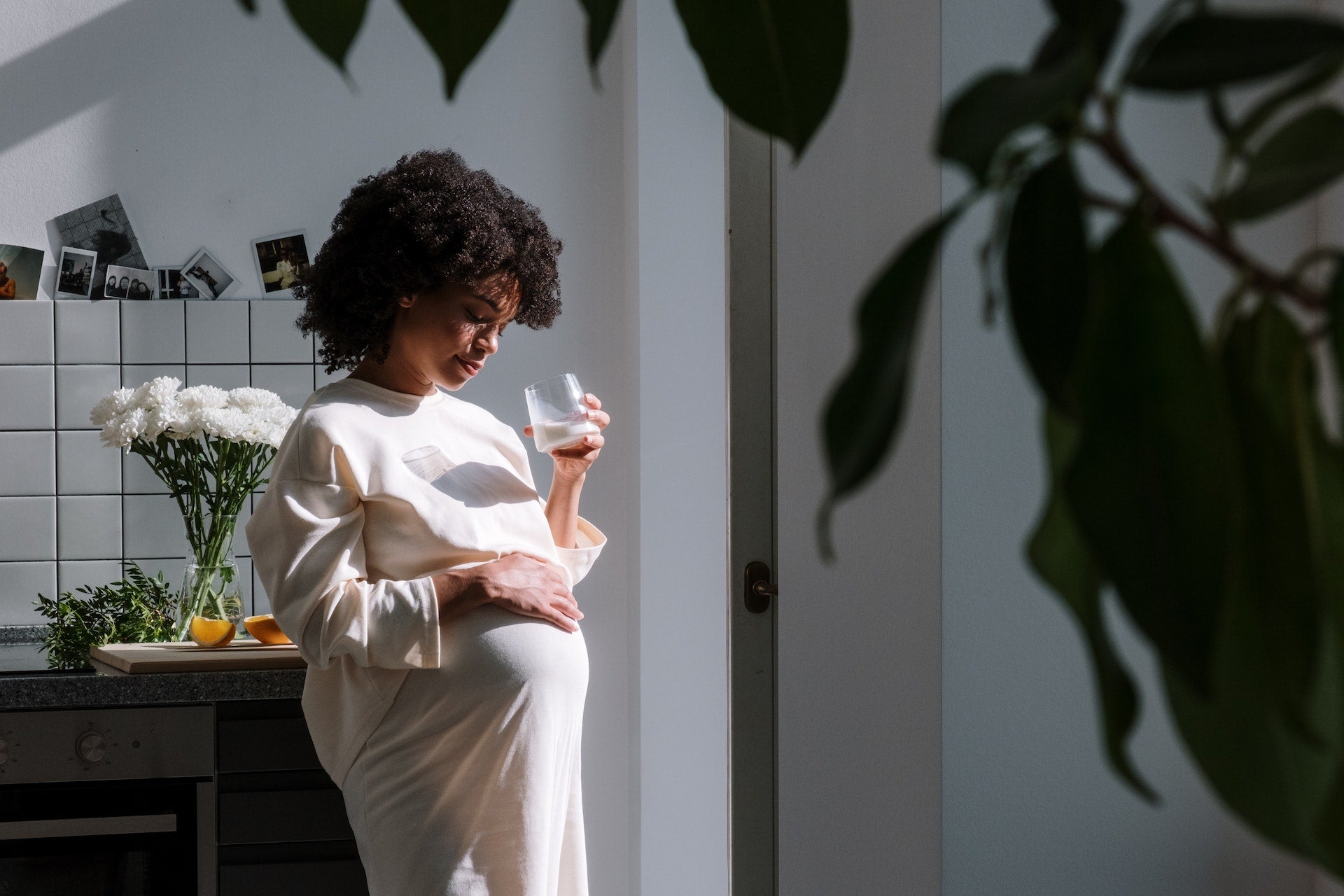
Having a healthy, balanced diet during pregnancy is important for both you and your baby. By eating a varied diet, you can ensure that you’re getting the nutrients you both need to help your baby grow and develop.
Eat Well Guide
A healthy diet doesn’t necessarily mean cutting out all your favourite foods. But instead, changing the number of different foods you eat to achieve a varied diet. The NHS Eat Well Guide makes it easy to understand how much of what you eat should come from each food group.
Cooking a balanced, nutritional meal may be the last thing on your mind when pregnant. Especially during your first trimester, when you may be experiencing sickness or tiredness.
But not to worry, as you don’t have to achieve the right balance in every meal. The NHS states that you should aim to get the balance right over the course of the week.
Myth-busting
A common myth you’ll hear while pregnant is that you’re now ‘eating for two’. However, when you’re pregnant, you don’t need to have larger portions or extra food. The best way to ensure your baby is getting the essential nutrients they need to develop is by trying to achieve a healthy, balanced diet.
It's normal to have an increased appetite during your pregnancy. According to BabyCenter, the reason you feel hungrier is due to changes in your hormones. They explain that even though you may feel ravenous, you don’t actually need any extra calories. It’s only in the third trimester that you need an extra 200 calories a day.

Fruit and Vegetables
Fruit and vegetables are full of vitamins and minerals as well as fibre, which can help prevent constipation. They also release energy slowly, so you feel fuller for longer.
Therefore, you should eat at least 5 portions of fruit and vegetables a day. These can be in the form of fresh, canned or frozen fruit and vegetables. When shopping for canned fruit and vegetables, you should opt for those that are tinned, in natural juice or water, with no added salt or sugar.
Remember to always wash fresh fruit and vegetables.
For more information on what counts as one of your 5 A Day, visit the Eat Well guide.

Important Vitamins and Minerals in Pregnancy
A healthy, varied diet should help you get most of the vitamins and minerals you need during pregnancy. However, the NHS recommends pregnant women to take a folic acid supplement and a vitamin D supplement.
Folic Acid
Start taking folic acid as soon as you begin trying for a baby or as soon as you find out you're pregnant. The NHS advise you to take a folic acid supplement that contains 400 micrograms (mcg) every day until the end of your first trimester. It’s important to follow this advice as folic acid can prevent neural tube defects such as spina bifida.
Vitamin D
Vitamin D is essential for healthy bones and muscles. During autumn and winter (between October and early March), the lack of sunlight means we cannot make the vitamin D we need. Therefore, you should consider taking a daily vitamin D supplement containing 10mcg.
Vitamins You Should Avoid
During your pregnancy, you should avoid supplements and multivitamins containing vitamin A (retinol). Too much vitamin A can harm your baby’s development. This also includes liver products such as fish liver oil.
If you’re unsure or have any doubts about vitamins and supplements. We recommend speaking to a healthcare professional.
Food and Drink to Avoid During Pregnancy
There are certain food and drink you should avoid while you’re pregnant. Some are more obvious than others, like alcohol. But others may surprise you.
Below is a condensed list of food and drink you should avoid:
- Raw or undercooked meat
- Game meats such as partridge
- All types of pâte
- Liver and liver products
- Raw shellfish
- Shark
- Swordfish
- Marlin
- Unpasteurised milk and dairy products
- Mould-ripened soft cheeses (unless cooked until steaming hot)
- Soft blue cheeses (unless cooked until steaming hot)
- Soft goats’ cheese (unless cooked until steaming hot)
- Raw or undercooked eggs that aren’t British Lion eggs
- Alcohol
- More than 200 mg of caffeine per day
We suggest you ask your GP or midwife for a full list of food and drink you should avoid while pregnant.
A Happy, Healthy Pregnancy
The most important thing to remember during your pregnancy is to eat a variety of foods to help achieve a balanced diet. Healthy eating doesn’t have to feel like a chore.
Remember, you can still enjoy your favourite foods. But just keep in mind that if sugary food and drinks are your favourite treats. You need to have these less often and in small amounts.
For further advice and guidance, speak to your doctor or midwife. Before making any changes to your diet, make sure you speak to a healthcare professional.
Tips & Tricks
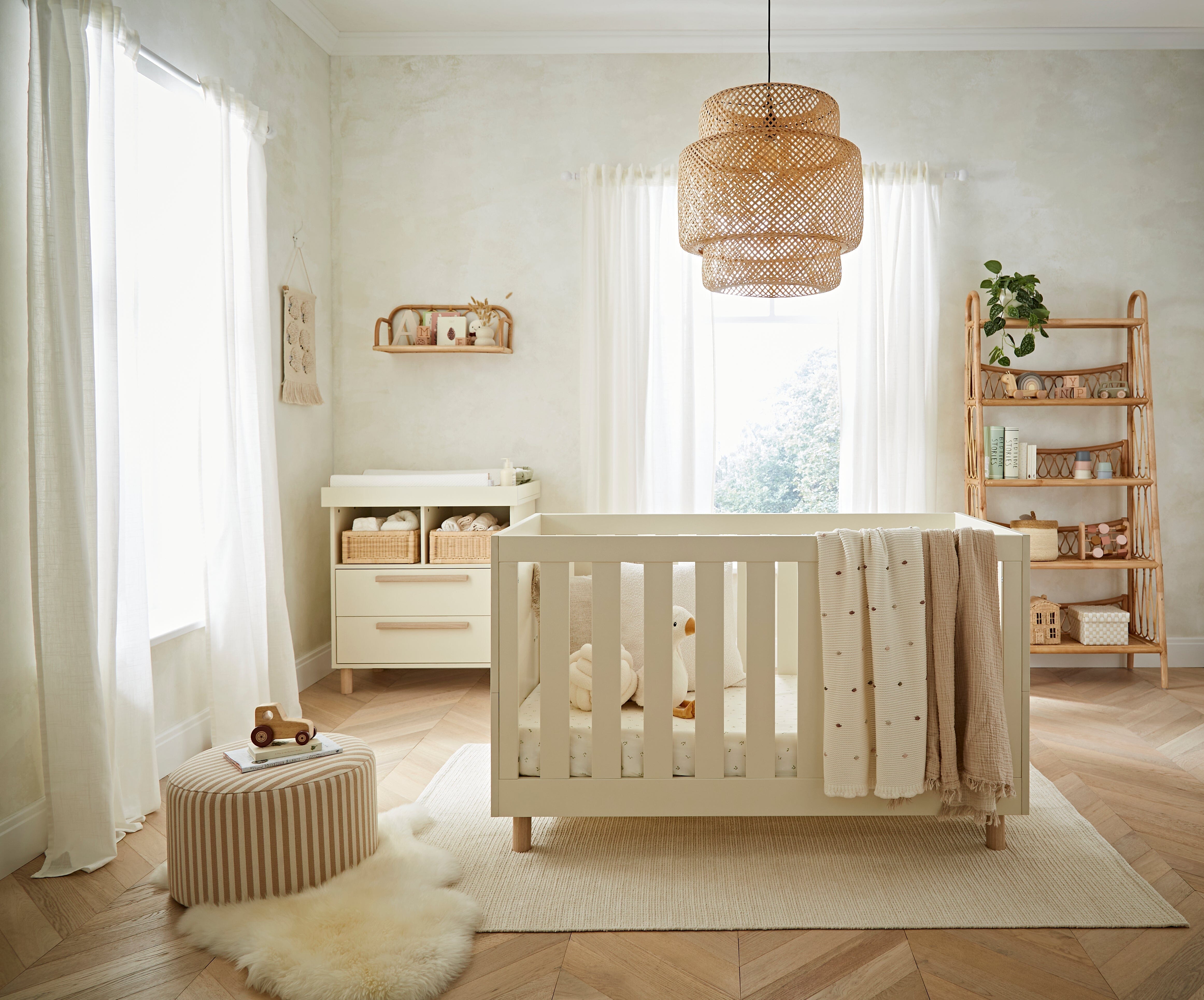
Within this blog, our expert visual merchandisers have put together a beautiful style guide packed with key accessories to help you bring your dream nursery to life. Whether you're starting from scratch or adding the finishing touches, this visual inspiration will help you create a warm, welcoming space that’s full of charm and personality.
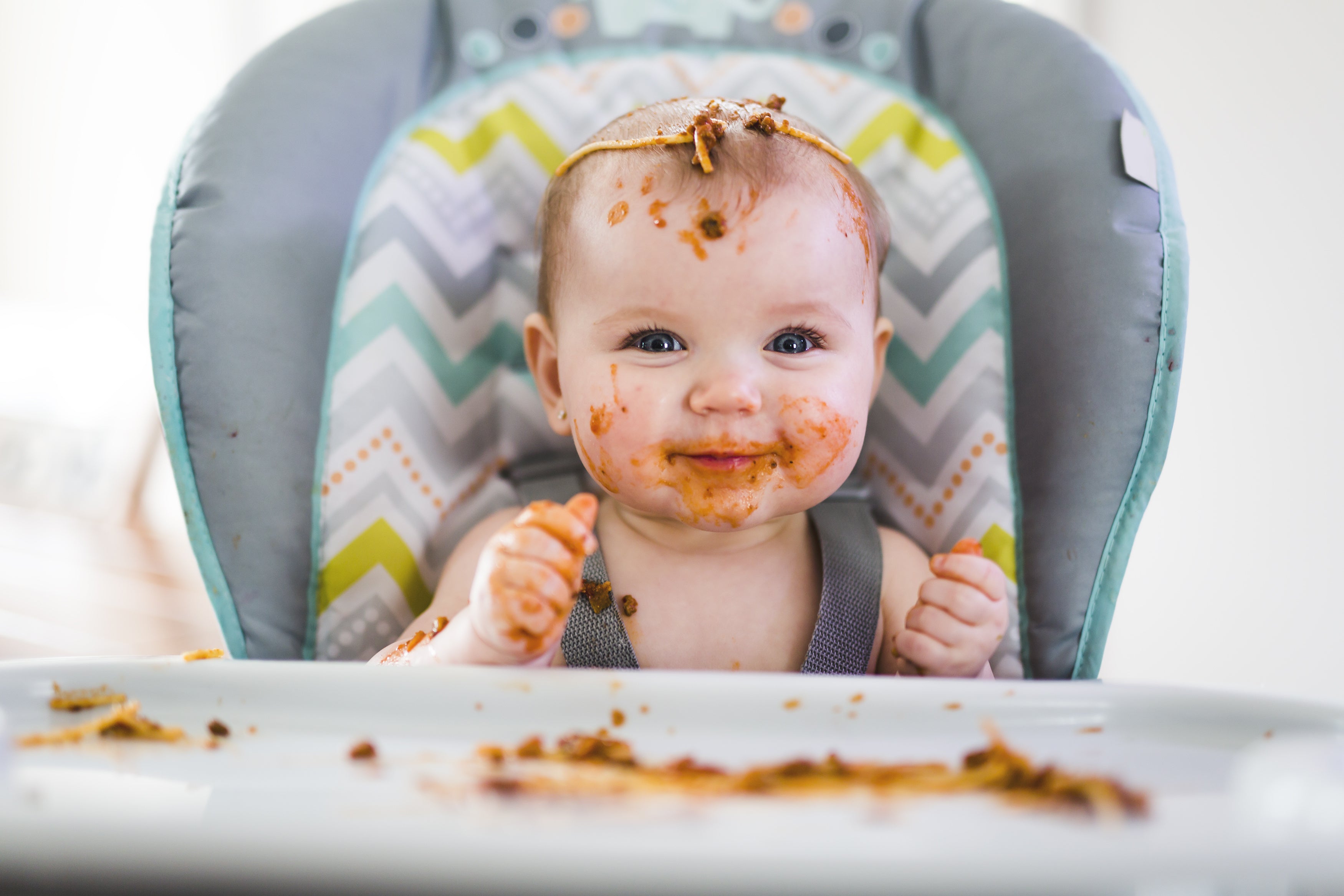
The start of the weaning journey can be an overwhelming time for both parents and baby. There are many worries parents share when approaching the weaning stage. However, most of these concerns have logical answers.
The most common anxieties parents share are surrounding their baby’s safety. For instance, how to tell the difference between gagging and choking is a fear for many. This is why this Child Safety Week, we want to give you an introduction to safe weaning and address any doubts you may have before you and your baby start the weaning journey.
What is Weaning?
Weaning is the introduction of solid foods alongside your baby’s usual breast milk or first infant formula. Solid foods are usually introduced around 6 months of age.
What is Baby Led Weaning?
Baby-led weaning is where you allow your baby to feed themselves rather than spoon-feeding them. You offer them a selection of foods to choose from themselves.
Weaning Essentials
-
High Chair – your baby needs to learn from an early age that they must be sat down when eating so that they can swallow their food properly. Always make sure that they are sat upright and strapped in. Remember, never leave your baby unattended when eating.
-
Muslin Cloths – you will probably already have plenty of these from when your baby first arrived. But these will also come in handy during spoon-feeding to clean up any spills or sick.
-
Bibs – weaning can get messy. So plastic bibs are the best for the beginning.
-
Plastic bowls – that have individual compartments are ideal to keep different flavours and textures separated. You should also opt for bowls with a suction pad to avoid any accidents.
-
Soft spoons – that are safe for your baby’s gums.
Introducing New Textures
When planning what meals to feed your baby, you should consider the size, shape and texture of the food you will be serving them. It is important to keep in mind that some babies may need smooth or blended foods to start with until they get used to new textures.
However, don’t worry if your baby refuses lumpy textures at the beginning. The NHS encourages you to keep offering your baby lumpy textures. They will get used to them eventually. The introduction of lumpy and mashed food alongside finger foods is essential. It helps your baby learn to chew, move solid food around their mouth and swallow.
Be Patient
Remember that patience is key when introducing your baby to new foods. Eating is a whole new skill for them, and you should always go at your baby’s pace.
How to Serve Food Safely
Hygiene
Babies are highly vulnerable to bacteria that can cause food poisoning. Therefore, you need to be extra careful when preparing and storing food for your little one. Basic hygiene, like washing your hands before preparing food. Should always be followed. But if you need a knowledge refresh, take a look at the BBC Good Food guide to safely preparing and storing food here.
Preparing Food
The main worry mums have when weaning their baby is the risk of choking. Choking can happen at any time with any food. But certain foods, such as small round foods, firm foods and foods with bones, can present a higher risk.


DO
- Remove hard pips and stones from fruit.
- Cut food into narrow batons.
- Avoid round shapes.
- Try grating, mashing, steaming or simmering firm fruits.
- Remove the skin on fruit, vegetables and meat.
- Remove all bones from meat or fish.
DON’T
- Do not give whole nuts to children under 5 years old.
- Do not give babies and young children boiled, hard, gooey or sticky sweets.
- Do not give popcorn to babies and young children.
- Do not give babies chewing gum or marshmallows.
For a full list of foods to avoid read the Start 4 Life safe weaning guide here.
Family Mealtimes
During mealtimes, you and your family members should all sit down together as much as possible. Mealtimes are the perfect opportunity for your baby to observe how you eat. By acting as good role models when eating, they can learn from the beginning how to eat safely. Babies copy their parents and other children, so it is important that you are a positive influence. You can do this by sitting upright, breaking your food up and chewing properly.
Gagging
It is normal for your baby to gag when you introduce them to solid foods. As we mentioned earlier, eating is a whole new skill for them. It will take them time to learn how the regulate the amount of food they can chew and swallow at one time.
Further Information
For more information regarding how to know when your baby is ready to wean. Or how to tell the difference between gagging and choking. You can visit the NHS website. You can also ask a health professional for support.
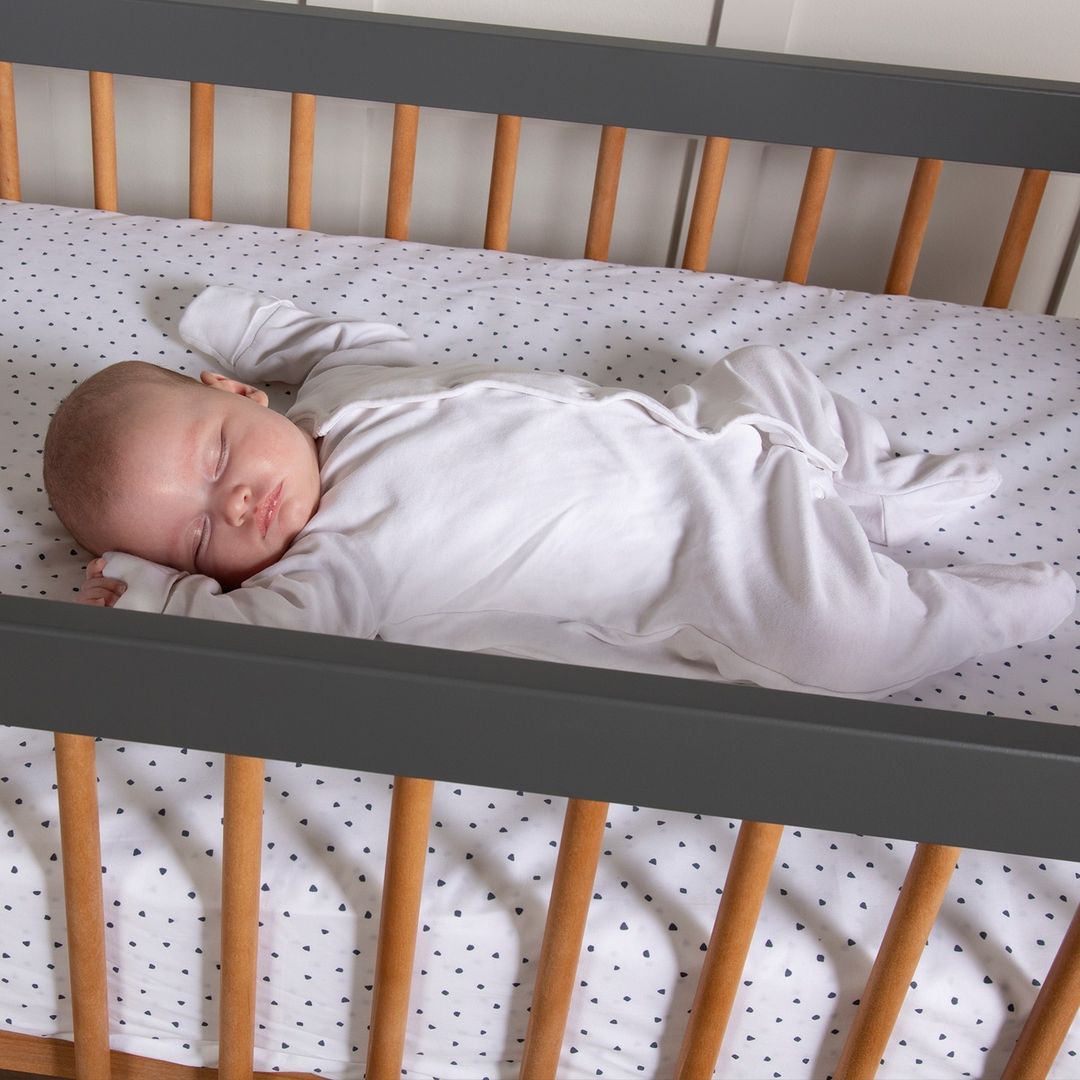
Whether you are a first-time mum or are expecting your second child, it is important to refresh your knowledge on safe sleeping practices for babies. Becoming a parent comes with new-found anxieties that you have never experienced before. And sometimes, these worries can overshadow your first few weeks of bonding with your little one. To help you conquer any fears you may have about putting your baby to sleep. We have created this blog post where you can find advice, guidance and the Do’s and Don’ts of safe sleeping.
What is Safe Sleeping Advice?
Safe sleeping advice is introduced to expecting parents to ensure that they are taking the necessary actions to significantly reduce the risk of sudden infant death syndrome (SIDS). Also more well known as cot death. It provides parents with the information they need to put their baby to sleep safely through the day and night.

Where Should my Baby Sleep?
The NHS recommends that for the first 6 months, your baby should sleep in the same room as you. The safest place for your baby to sleep is either in a moses basket, crib or cot. Always make sure that you place your baby on their back to sleep.
Can my Baby Sleep in my Bed?
As advised by the Lullaby Trust, babies should sleep in a clear, safe sleep space, which is easy to create in a cot or moses basket. However, it is a personal choice. Below is some guidance from the Lullaby Trust on how to make your bed a safer place for your baby to sleep.
DO
- Ensure that you keep pillows, sheets, blankets and any other items that could obstruct your baby’s breathing or cause them to overheat away from them.
- Make sure that your baby won’t fall out of bed or get trapped between the mattress and the wall.
- Follow all other safer sleep advice.
DON'T
- Do not let pets or other children in the bed.
- Do not co-sleep if you or your partner smoke.
- Do not co-sleep if you or your partner has drunk alcohol or taken drugs (including medications that may make you drowsy).
- Do not co-sleep if your baby was born premature or at a low weight.
- Never sleep with your baby on a sofa or armchair.
You should never share a bed with your baby if any of the points above apply to you or your partner.
What Type of Blanket Should I use to Cover my Baby?
You should never cover your baby with a bulky quilt, duvet or fluffy blanket. This type of bedding can make it difficult for your baby to breathe and cool down. Lightweight blankets are the best type to use as you can easily adjust the temperature by layering one or more. Remember, a folded blanket counts as 2 blankets.
Your baby’s blanket should not go above their shoulders. To prevent their blanket from moving in the night, tuck it securely under their arms. You should also place them in the ‘feet to foot’ position. It means that their feet are at the end of the moses basket, crib or cot. Instead of a blanket, you may want to use a well-fitting baby sleep bag with the correct tog value.
How do I Know if my Baby is too Warm or Cold?
According to experts, the ideal temperature for your baby’s room is between 16 and 20 degrees. The best way to check if your baby is too warm is by checking the back of their neck to make sure their skin doesn’t feel hot, clammy or sweaty to touch. But remember, if they are unwell, they may feel warmer than usual. In this instance, you would use fewer bedclothes. Another way to check whether the temperature in your baby’s room is comfortable is to get a room thermometer.
What Should my Baby Wear for Bed?
The first thing to take into account when dressing your baby for bed is their room temperature. Knowing the temperature of their nursery will help you make an informed decision on what to dress them in. Remember your baby should never wear a hat to bed as their head is important for maintaining their body temperature. It is how they release heat.
Below is a helpful infographic with guidance on what your baby should wear to bed, depending on what the room temperature is.

Does Breastfeeding Reduce the Risk of SIDS?
Yes. A 2017 study found that breastfeeding for at least two months, even if supplemented with formula, can cut the risk of SIDS in half. Furthermore, the Department of Health recommends that babies are fed only breast milk for at least 6 months.
Unfortunately, breastfeeding isn’t an easy experience for every new mum. But if you’re struggling, you can reach out to the National Breastfeeding Helpline for advice and help on 0300 100 0212.
More Safe Sleeping Practices
- Use a firm and flat mattress that is protected by a waterproof cover, making sure that it is the correct size for your moses basket, crib or cot.
- Don’t use sleep positioners to keep your baby in one position unless advised by a health professional.
- Keep your baby’s sleep space clear of pillows, bumpers, soft toys, pods or nests.
- Keep your home smoke free.
Always Ask if Unsure
When it comes to the safety of your baby, no question is stupid. Your midwife or health professional will be happy to answer any questions you may have. There are also many trusted organisations online, such as the Lullaby Trust or the NHS, that have a great range of resources that cover safe sleep practices.

Child Safety Week is a community education campaign that happens once a year and is championed by the Child Accident Prevention Trust. The charity’s aim is to reduce the number of children and young people killed, disabled or seriously injured in accidents. One way the charity works towards this is by giving free child safety advice to parents and carers to ensure that they have the tools and information required to keep their little ones safe.
This year, Child Safety Week runs from Monday 6th to Sunday 12th of June with the theme of Safety in mind.
In honour of this important week, we have decided to use our resources and expert knowledge to create a series of blog posts. These posts will be dedicated to 4 different safety topics to inform you about real risks that your children are exposed to daily. However, the purpose of these blog posts isn’t to instil you with fear. Instead, we want to provide you with the information you need to deal with these situations confidently and calmly.
The Safety Topics
In this blog, we will cover the main aspects of safe sleep for babies to reduce the risk of sudden infant death syndrome (SIDS). We will focus on common questions about safer sleep and precautions you and your family can take before putting your baby to sleep.
This post is a must-read if you are about to start the weaning journey with your baby. We will empower you with the knowledge you need to safely wean your baby. And will look at weaning essentials, foods to avoid and much more.
A car seat is one of the many things you need to buy before your baby is born. This blog post will act as a guide to choosing the most suitable car seat for your new arrival and will help you better understand the safety regulations and laws in place.
Taking the time to baby-proof your house is an important process that all parents will have to go through before your little one is able to crawl. If you are unsure where to start, this blog post is an essential read.
Make sure you check back in each day this week when we will be publishing a new safety article. For more information on Child Safety, make sure you head over to the Child Accident Prevention Trust (CAPT) website.
In the meantime, you can read the safety-related blog posts that we already have on our website, such as ‘What is the Best Cot Mattress for Your Baby' and ‘How to Get a Baby to Sleep on Its Back’.
News
We all know toddlers can be tiring so we’re here to help where we can with the best advice for toddlers. from meal advice to helping with the first steps of life, we hope we can make parenting a little easier!
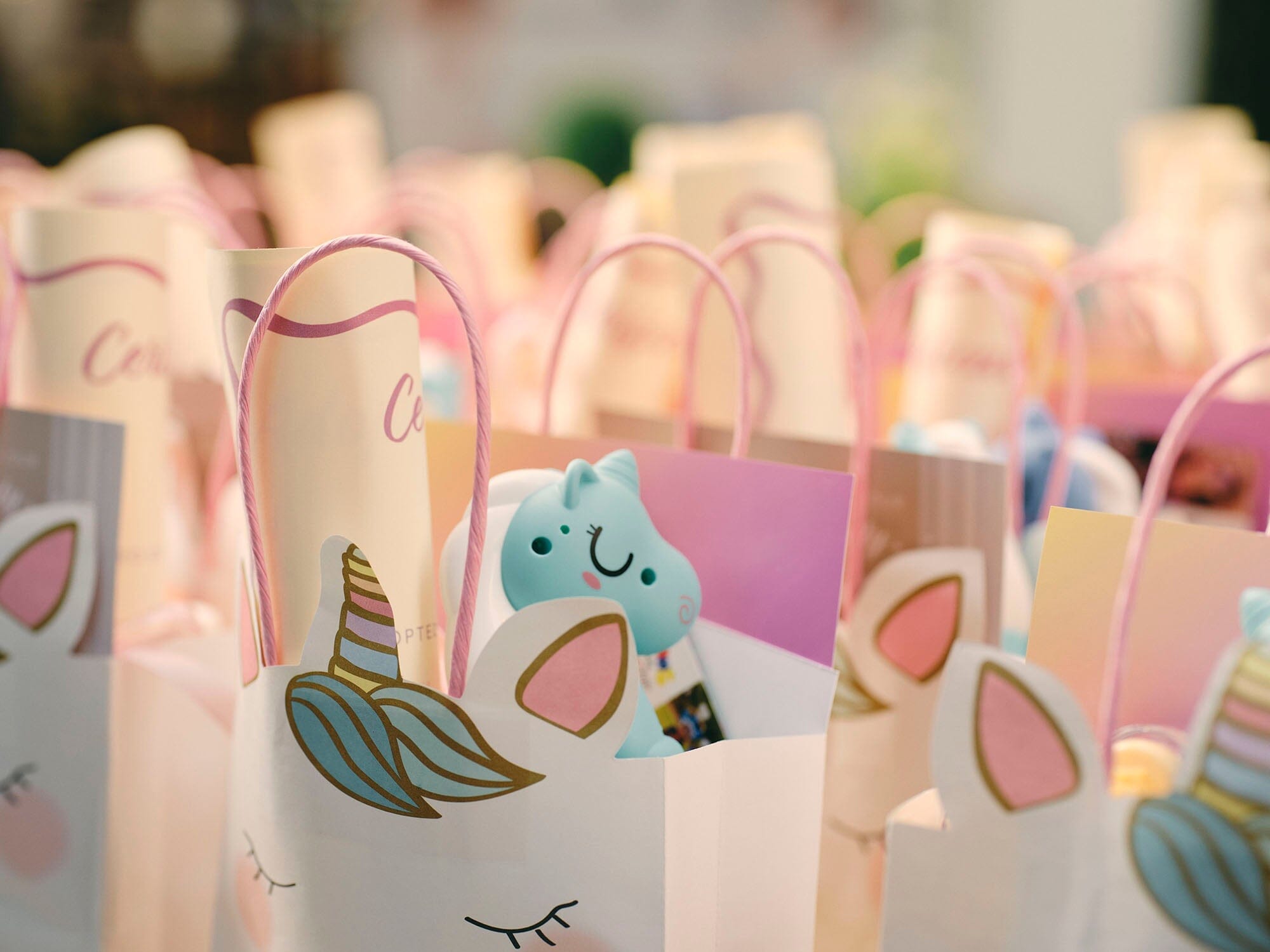
Discover the magic of Cuddleco's first unicorn community event at Bents Garden & Home! Launching our standing unicorns, giraffes, and stylish nursery storage baskets — the perfect finishing touches for your nursery.
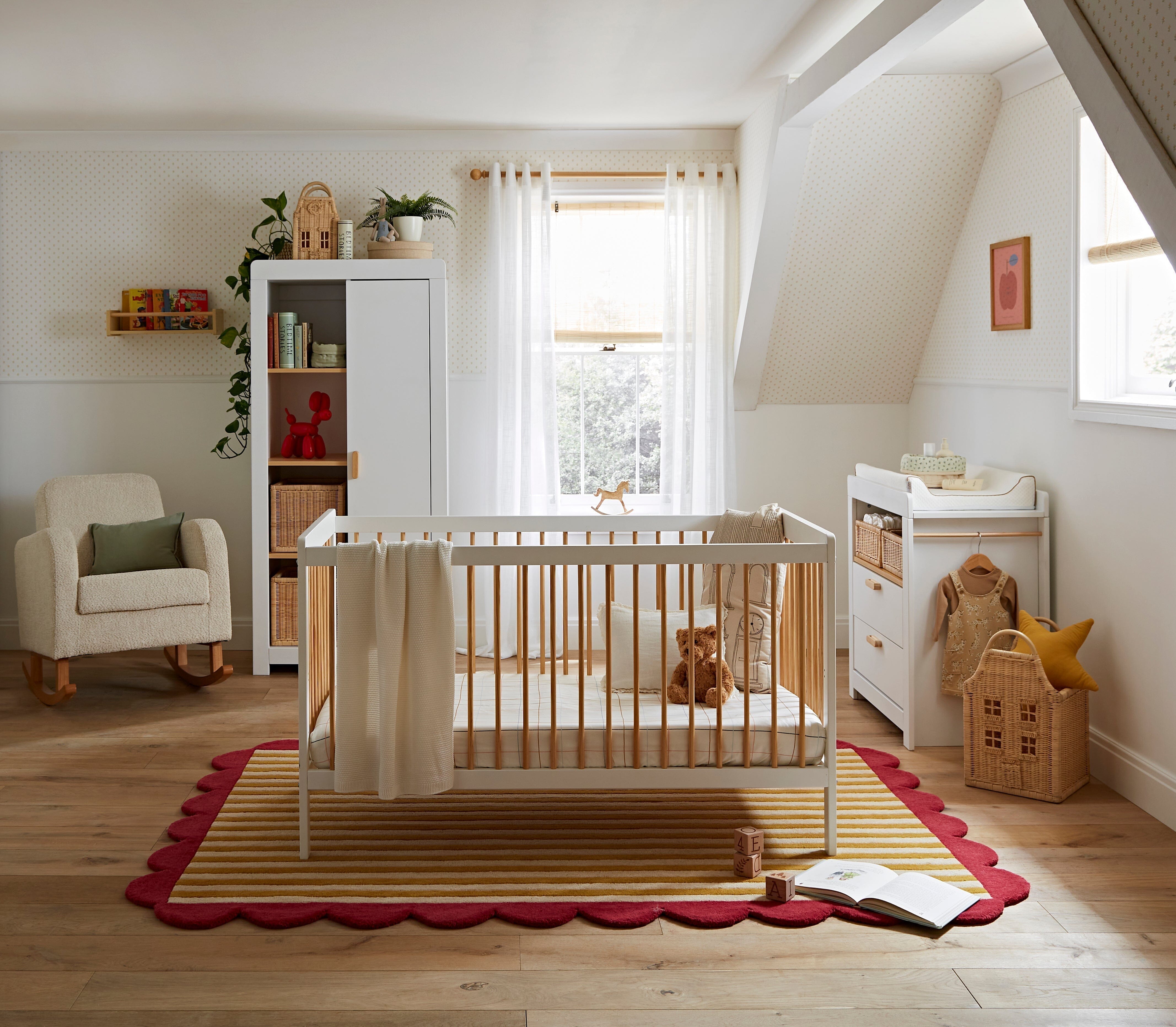
Spring has officially arrived, and there's no better time to refresh your baby's nursery with CuddleCo's Spring Sale!
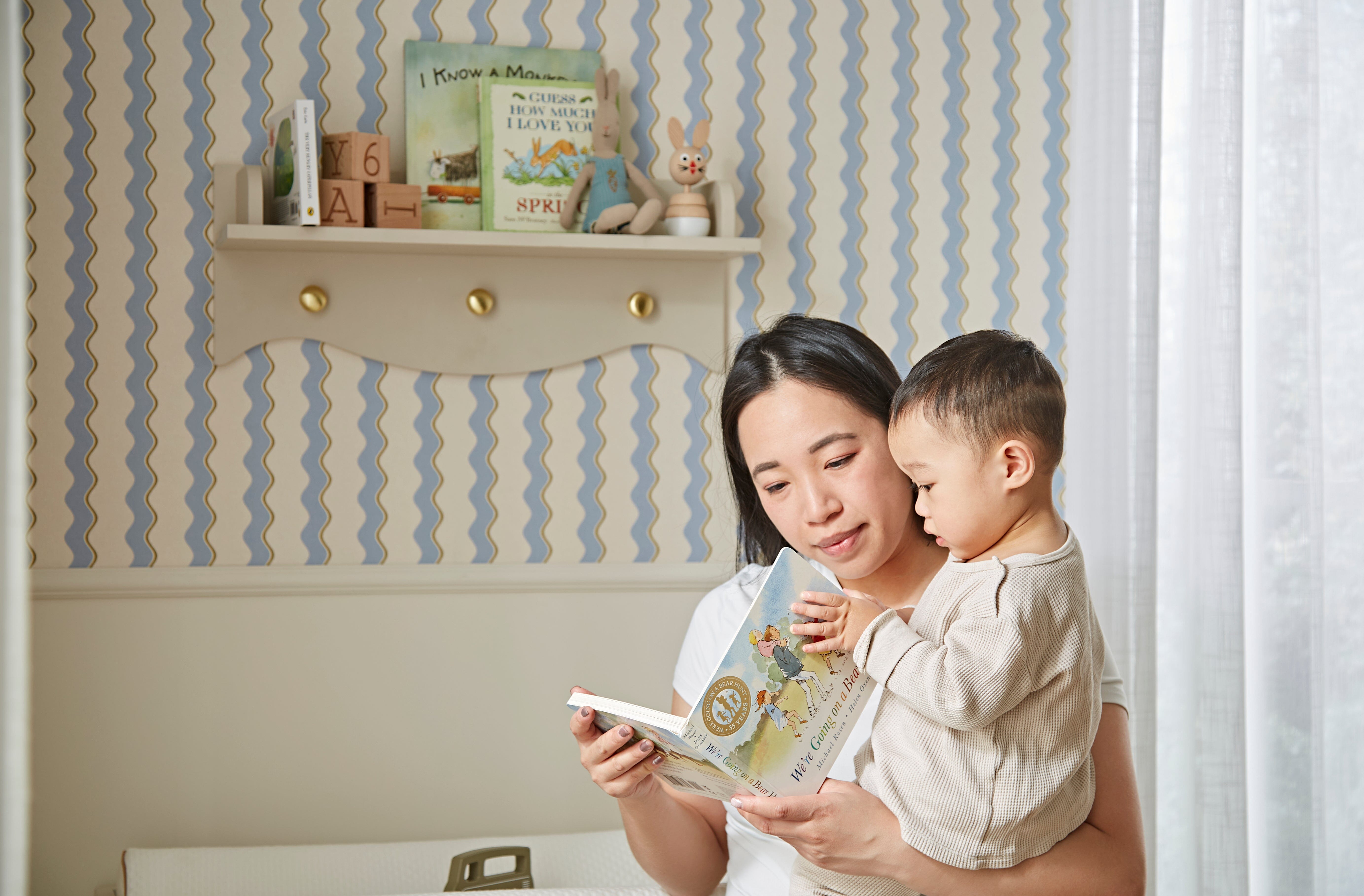
Motherhood is a journey filled with love, laughter, and unforgettable moments. This Mother’s Day, we’re celebrating the incredible mums on our CuddleCo team by sharing their heartfelt thoughts and advice.
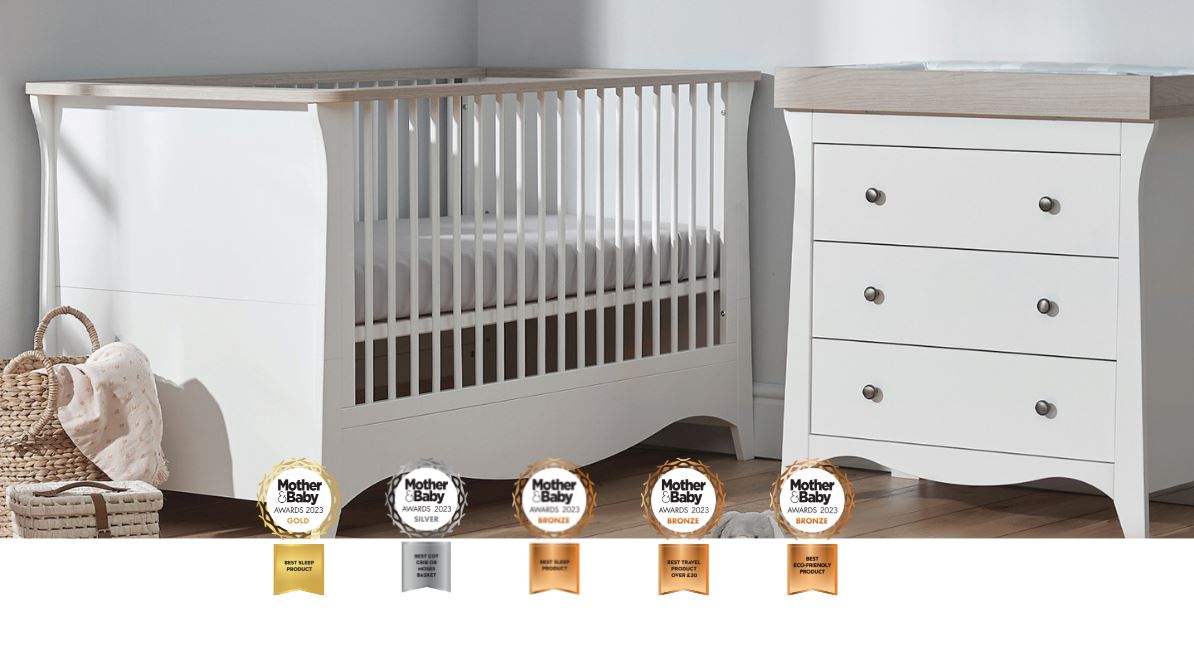
The Mother&Baby Awards are chosen and voted for by mums each year, making them the most prestigious in the parenting market.
Brands, products and stores nominated for one of these renowned awards can be trusted by parents everywhere. As they’re tried, tested and, most importantly, trusted by real mums!
After being shortlisted in October for 7 products across 5 categories and 3 brands, we were thrilled and humbled to be included in these distinguished awards. And delighted to know that our products were loved and appreciated by mums.
The team headed to the Mother&Baby Awards Show in London to find out if we would take home a Gold, Silver or Bronze for any of our products that had been shortlisted.

We’re honoured to announce that out of the 7 products we had been nominated for, 5 of them won awards!
Winning products and categories:
Best Sleep Product
GOLD: CuddleCo Lullaby Hypo-Allergenic Bamboo Cot Bed Mattress 140 x 70cm
BRONZE: CuddleCo Signature Hypo-Allergenic Bamboo Pocket Sprung Cot Bed Mattress 140 x 70cm
Best Eco-Friendly Product
BRONZE: Troll Lukas Cot Bed – Soft Grey/Natural plus mattress
Best Cot, Crib or Moses Basket
SILVER: CuddleCo Clara Cot Bed
Best Travel Product Over £30
BRONZE: Doona Liki Trike S1
We couldn’t be happier with the results and would like to thank the mum’s out there who tried, tested and ultimately loved our products and, of course, Mother&Baby.
Recipes
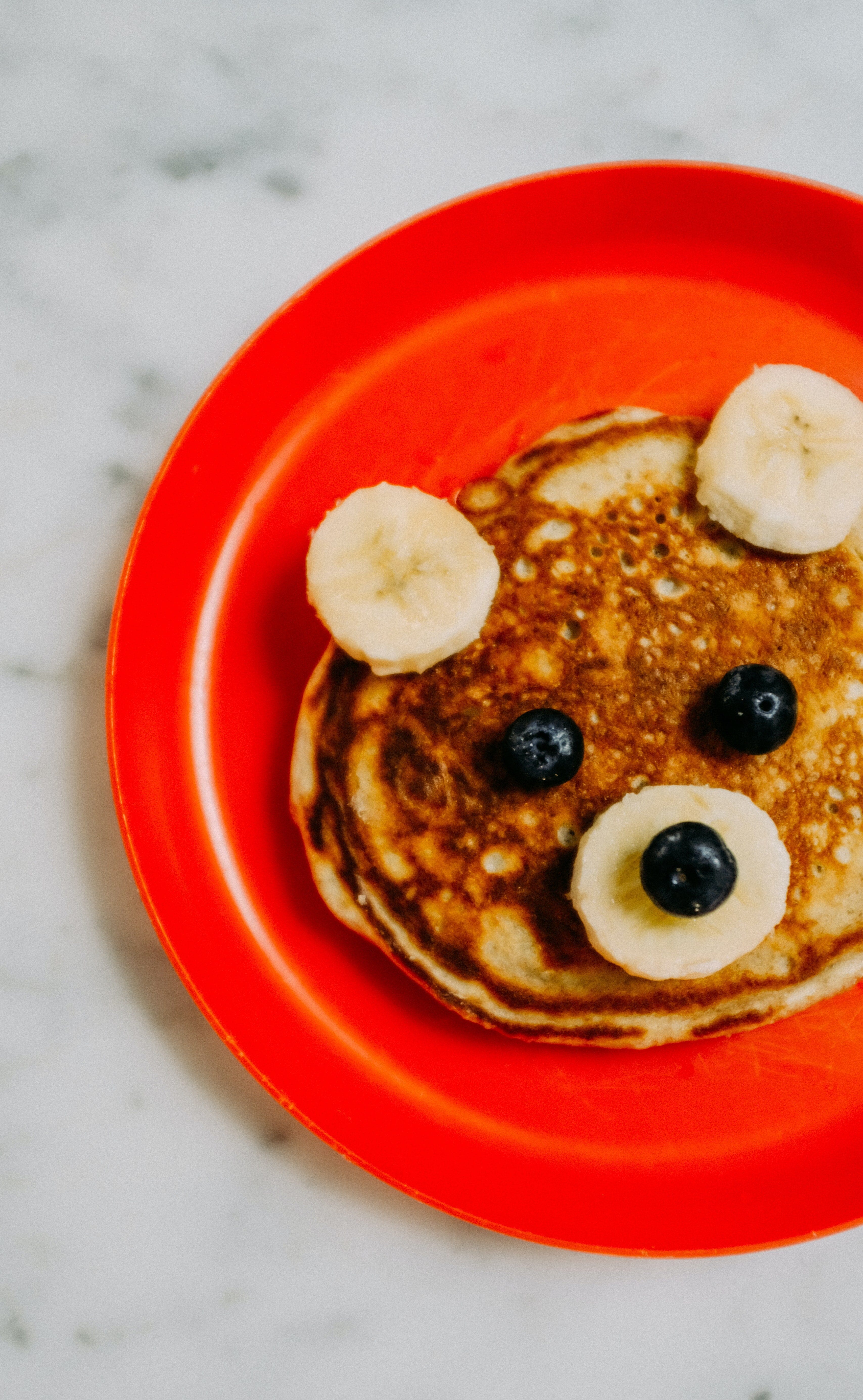
Pancake Day is the perfect opportunity for the whole family to sit down together and enjoy some tasty treats. Paediatric Dietitian, Kat Martinez-Thomas, is here to share with you a quick and easy pancake recipe!
Pancakes are an ideal food for babies, and with pancake day around the corner, I wanted to share a super easy weaning pancake recipe that the whole family can enjoy!
These banana pancakes for baby use simple ingredients but are a bit of a twist on the classic recipe. Oats contain energy, fibre, B vitamins and some protein, making them a nutrient-rich food for babies. The banana adds a little extra flavour and texture to the recipe, as well as extra vitamins and minerals, including vitamin C and potassium.
Serve with a dollop of yoghurt and some fruit for a perfectly balanced meal for your baby. Adding a little nut butter, if your baby has tried it before, would be ideal, too!
When can my baby have pancakes?
Pancakes are a great finger food for baby right from early on in their weaning journey. Once baby has started to experiment with different textures, these pancakes are nice and soft and can be cut into ideal shapes for baby to grab hold of to bring to their mouths. They’re a perfect baby-led weaning food – even for parents who may be a little more anxious about offering finger foods.
A note on allergies
This recipe includes eggs, milk and oats – all of which are potential allergens. Make sure your baby has had all of those ingredients before offering them these pancakes. For more on allergens, you can check out the NHS website.
Ingredients

- 1 large banana
- Half a cup of oats
- 75ml milk of choice (see NHS advice on Milk here)
- 1 free range egg
- Sprinkle of cinnamon (optional)
Method
- Simply add all of the ingredients to a blender and blend until you have a batter consistency
- Heat some oil in a pan on a medium heat. When hot, turn the heat down and add around 1 and a half tbsp of batter into the pan – add as many as you can fit with a little room to flip (Keep the heat low to avoid the outside burning)
- Watch them carefully and flip once browning on one side. Use a knife to gently check that they’re cooked all the way through
- Continue until you’ve used up all of the batter – you may need to add extra oil in between cooking
- Cut into strips and enjoy!

About Kat
Kat offers weaning and dietary advice to parents and carers looking for extra support feeding their babies and children. Head over to Kat’s website to find out more about the services she offers.
Weaning
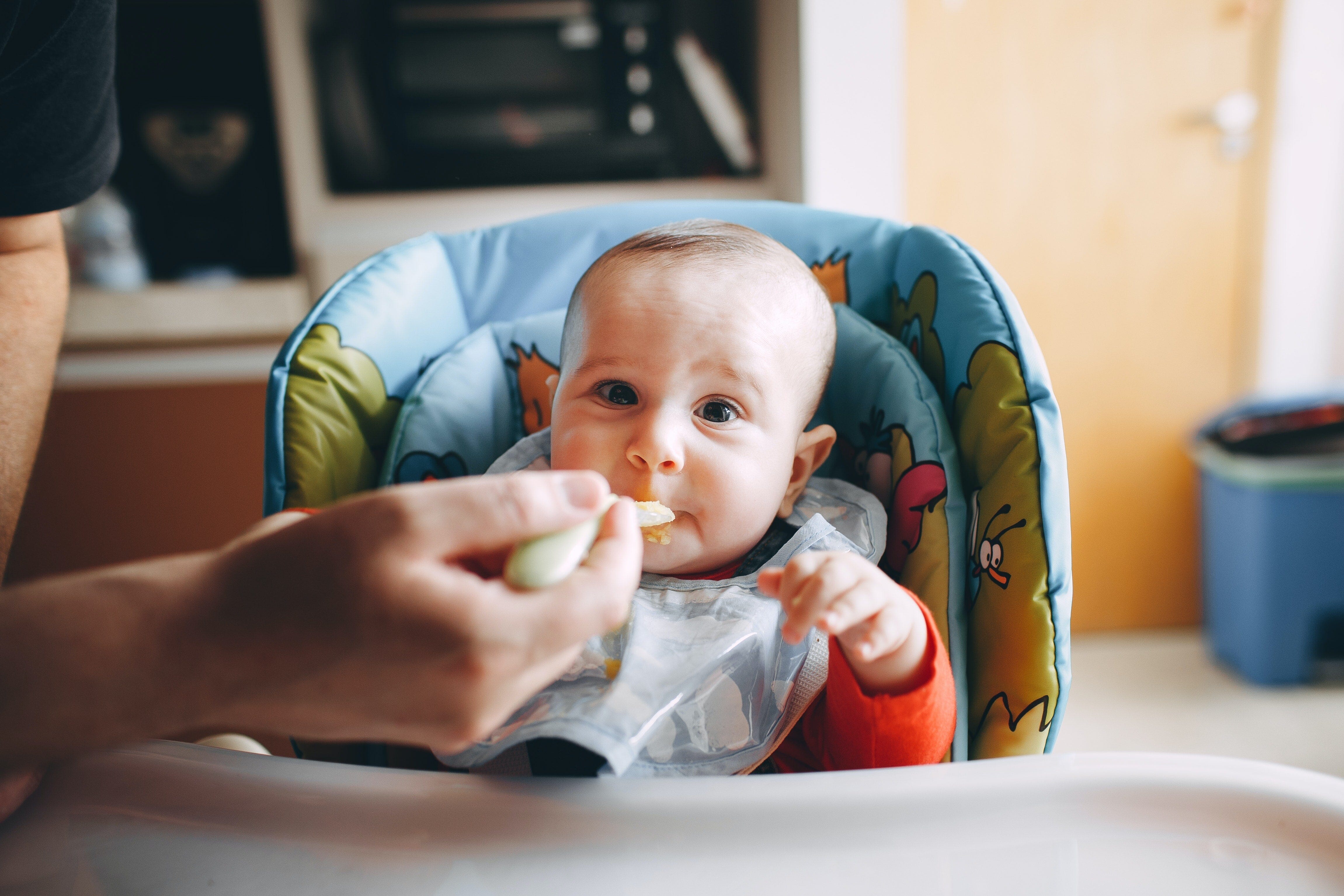
Starting to wean your baby can be overwhelming for both you and your little one. You might have lots of worries and questions about how to get started or what method is best. Paediatric Dietitian, Kat Martinez-Thomas, has written a guest blog post that will help you start your weaning journey with confidence.
One of the main questions parents have when it comes to weaning is exactly HOW to start. It can be quite overwhelming when looking on the internet, especially with the rising popularity of “baby-led weaning” in recent years.
This blog will cover the differences between traditional and baby-led weaning, as well as the pros and cons of both methods, and highlight what to consider when starting your baby on solid foods.
What is baby-led weaning?
Whilst traditionally babies have been offered pureed food at the start of weaning, baby-led weaning means skipping the purees and offering finger foods instead. The idea is that the baby is in control of what, and how much, they eat, rather than being fed by an adult – hence the term “baby-led.”
What are the benefits of baby-led weaning?
There are many benefits to baby-led weaning, including:
- Allowing the baby independence and autonomy over what they’re eating – this can also help them to follow their own appetite from early on
- Learning to experiment with a wider variety of textures more quickly, and developing skills to pick up food, bring it to their mouth, chew and swallow
- Easier for babies to be involved in family mealtimes and be exposed to more family style foods
- Easier preparation for parents as they can feed baby the same foods they are eating
Are there any cons to baby-led weaning?
One of the main worries parents have with baby-led weaning is around choking. The current research doesn’t show any increased risk of choking from babies that are following a baby-led weaning approach.
Being exposed to a variety of textures as soon as possible, whether through spoon-feeding or finger foods is important to help babies develop and practice the skills needed to become competent eaters.
Some research suggests that babies who follow baby-led weaning take in LESS nutrition at the beginning, as they learn the skills to eat competently. Whilst milk continues to be a main source of nutrition, there are some nutrients, particularly iron, which are important to get from food. Offering plenty of variety of iron-rich foods such as meat, fish, eggs, beans, pulses, nuts and seeds can help to ensure babies get plenty of opportunity to maximise the nutrition from their food.
What about traditional weaning?
Traditional weaning involves spoon-feeding babies purees of different foods and gradually progressing through to more lumpy and textured foods. Many parents may feel more confident following this method, particularly at the start of weaning. It can be slightly less messy than baby-led weaning and parents may find it easier to know how much their baby has eaten. This can help parents to feel comfortable that their baby is getting certain nutrients, such as iron.
Spoon-feeding babies purees can mean it takes longer for them to become involved in family mealtimes, as it’s more difficult to share a meal when feeding your baby at the same time. It can also mean that babies are exposed to less variety of textures, which is important for them to develop and practice the skills needed for eating.
What is the best way to start weaning?
Ultimately, the weaning style parents choose will depend on a variety of factors. There are pros and cons to both baby-led weaning and spoon feeding, and it’s important that parents feel confident in whichever method they follow for feeding their child. Offering a mix of both finger foods and spoon-feeding can be a great way to allow your baby to explore and experiment.
Whether you’re offering finger foods or purees, it’s a good idea to offer as much variety as possible and really allow your baby to try different tastes and textures. It can be a messy time but try to let your baby experiment as much as possible.
It’s perfectly normal for them to want to get stuck in and use their hands or hold the spoon themselves. The more they can feel in control at the table, the more likely they are to enjoy it and feel confident exploring the food on offer.
Whatever way you choose to wean your baby, try to ENJOY the process as much as possible and focus on making the mealtime a positive experience. There’s A LOT for babies to learn during weaning – they need plenty of opportunity to practice and they’ll all get there in their own time!
About Kat
Kat offers weaning and dietary advice to parents and carers looking for extra support feeding their babies and children. Head over to Kat's website to find out more about the services she offers.

